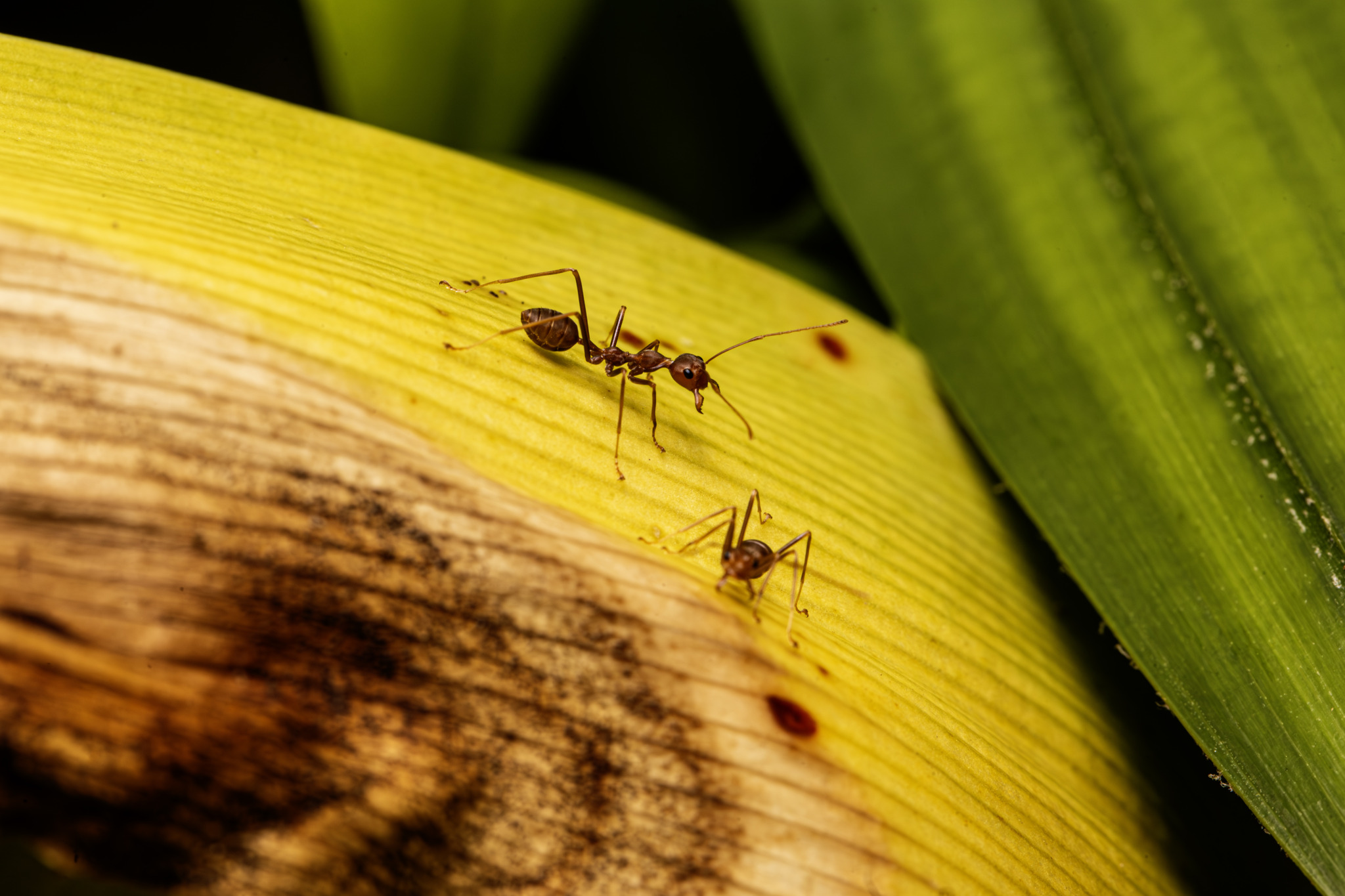The Weaver Ant (Oecophylla smaragdina), also known as the Green Ant or Asian Weaver Ant, is a species of ant belonging to the genus Oecophylla in the family Formicidae. Here are some key features and characteristics of the Weaver Ant:
- Appearance: Weaver Ants are relatively large ants with slender bodies and long legs. They are typically bright green or greenish-brown in color, with a metallic sheen on their exoskeleton. They have large mandibles (jaws) and powerful thorax muscles, which they use for various tasks including hunting, defending their nests, and weaving nests.
- Habitat: Weaver Ants are commonly found in tropical and subtropical regions of Asia, Australia, and Africa. They inhabit a variety of habitats including forests, woodlands, gardens, orchards, and urban areas. They are arboreal ants, meaning they primarily nest in trees and shrubs.
- Social Structure: Weaver Ants are highly social insects that live in large colonies consisting of thousands to tens of thousands of individuals. They have a strict social hierarchy with one or more reproductive queens, male ants, and sterile worker ants. Worker ants are responsible for foraging, nest maintenance, and defending the colony.
- Nesting Behavior: Weaver Ants are known for their unique nesting behavior, which involves constructing elaborate nests made of living leaves and silk produced by their larvae. Worker ants pull the edges of leaves together and use silk to bind them, creating a secure nest structure. These nests are often located at the tips of branches and provide protection from predators and adverse weather conditions.
- Feeding Habits: Weaver Ants are omnivorous and feed on a variety of food sources including insects, insect larvae, nectar, and honeydew produced by aphids and other sap-sucking insects. They are skilled hunters and use cooperative hunting strategies to capture prey.
- Defense Mechanisms: Weaver Ants are highly territorial and aggressive towards intruders. They use their strong mandibles and venomous stings to defend their nests from predators and rival ant colonies. They also engage in group defense behaviors, where worker ants form living bridges and barricades to block intruders.
- Economic Importance: Weaver Ants have both positive and negative impacts on ecosystems and agriculture. They play important roles in pest control by preying on insect pests and regulating insect populations. However, they can also damage crops and fruit trees by feeding on plant sap and protecting honeydew-producing insects.
Overall, Weaver Ants are fascinating insects known for their complex social behaviors, impressive nest-building skills, and effective predatory strategies. They are important components of tropical ecosystems and have cultural significance in some regions where they are used in traditional medicine or as a food source.
Visited 183 times, 26 visit(s) today
Views: 324
Subscribe to the newsletter:
